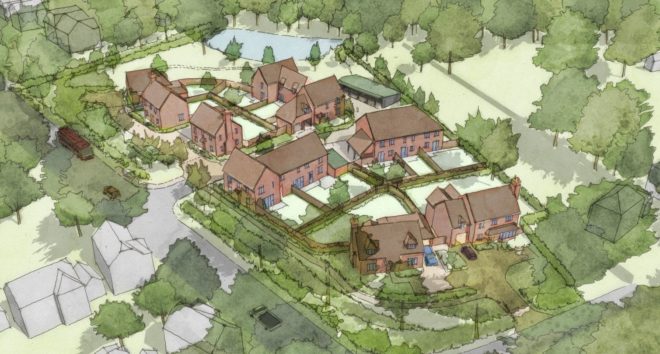First-class development is given the green light in South Downs National Park
August 2, 2021

A high-quality development that includes affordable housing and highway improvements has been given the go-ahead.
The Authority’s Planning Committee voted to approve plans for 14 new dwellings on land at Limbourne Lane and The Fleet, in Fittleworth, West Sussex.
The residential development will include seven affordable homes, of which five will be social-rented tenure and two shared ownership.
Given the sensitive landscape characteristics, the scheme has evolved over time through extensive pre-application discussions with the applicant, Montagu Developments Limited.
The resulting scheme includes a number of sustainable design features, including plastic-free windows and the use of timber and local stone, as well as green roofs on the car ports.
Energy sustainability is a highlight of the development, including electrical vehicle charging points at all homes and the use of solar panels to reduce the carbon footprint. One of the dwellings will be a certified Passive House.
No street lighting is proposed, helping to conserve the area’s Dark Skies Reserve status and benefitting nocturnal and crepuscular wildlife.
The Authority has also secured a financial contribution from the developer towards traffic calming measures in the area, meeting a local need to reduce traffic speeds and promote walking and cycling.
Rob Ainslie, who heads Development Management at the Authority, said: “The site was allocated for residential development in the Neighbourhood Development Plan and the scheme has evolved over time to take into account local needs, as well as recognising the National Park’s landscape-led approach with a focus on biodiversity.
“It provides much-needed affordable homes and also a sustainable drainage scheme that will address the current water-logging issues at the site.
“The design of the scheme gives consideration to habitats and protected species, retaining the features that support bats and delivering significant biodiversity net gain.”
